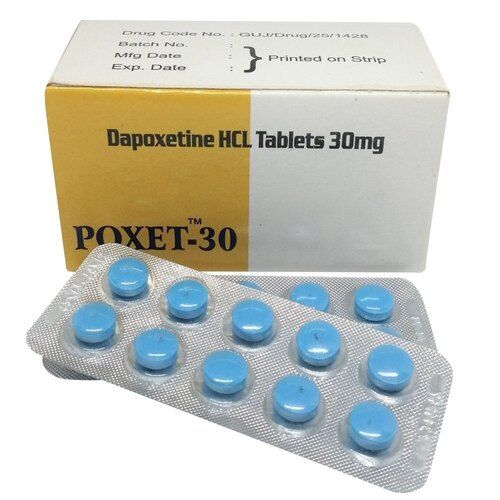


Alphalan Melphalan Tablets
3000 INR/Bottle
Product Details:
- Drug Type Other Types
- Ingredients Melphalan
- Suitable For Suitable For All
- Click to View more
X
Alphalan Melphalan Tablets Price And Quantity
- 3000 INR/Bottle
- 5000 Bottle
Alphalan Melphalan Tablets Product Specifications
- Melphalan
- Suitable For All
- Other Types
Alphalan Melphalan Tablets Trade Information
- Paypal Cash Against Delivery (CAD) Cash Advance (CA) Cash in Advance (CID) Cheque Western Union
- 5000 Bottle Per Week
- 1 Week
- South America Asia North America Africa Eastern Europe Australia Central America Western Europe Middle East
Product Description
Definition Ovarian cancer is the result of uncontrolled growth of cells of the ovaries in women. Since the ovaries secrete hormones, ovarian cancer can lead to severe menstrual problems.Ovarian cancer generally occurs after menopause, between 50 years and 60 years of age. Causes and Risk Factors Causes include,1. Genetic mutation: The genes BRCA1 and BRCA2 which are breast cancer causing genes are known to increase the risk of ovarian cancer.2. Hereditary: Ovarian cancer runs in familyFollowing women are at a higher risk of developing ovarian cancer who,1. Have taken estrogen hormone replacement therapy after menopause2. Have never conceived3. Have taken fertility treatment with certain medications like clomiphene citrate for more than a year.4. Smoke Signs and Symptoms Ovarian cancer may produce no symptoms or many vague signs and symptoms in the initial stages. Generally, it is seen that when the disease has spread beyond ovaries, it produces clearer symptoms.Early symptoms include:1. Bloating of abdomen2. Pain in abdomen or pelvic region3. Difficulty in eating or feeling full too early4. Urinary symptoms like increased frequency and urgency
These symptoms can occur in many other noncancerous diseases and even in cancers of other organs. However, when occurring due to cancer of ovaries, the symptoms are persistent and occur more frequently or are more severe.Others symptoms include:1. Fatigue2. Upset stomach3. Backache4. Painful sex5. Constipation6. Altered menstrual cycle7. Swelling of abdomen with weight loss Investigations 1. Blood testb) CA-125: It detects CA-125, a protein found on the surface of ovarian cancer cells.2. Imaging test: Imaging tests like transvaginal ultrasonography (TVUSG), MRI (magnetic resonance imaging), x-ray, CT scans, and PET (positron emission tomography) are done to know if cancer has spread beyond ovaries. These tests are mostly done after ovarian cancer is diagnosed.a) Biopsy
Treatment Being difficult to treat cancer, early detection and aggressive treatment are essential in saving the life. The combination of two treatment options from the following is usually used in treating ovarian cancer:1. Surgery: It is the mainstay of treating ovarian cancer. Depending on the stage of the disease the extent of surgery is determined. Only the ovaries or the uterus and fallopian tubes too might be surgically removed.2. Medical therapy,(a) Chemotherapy and targeted chemotherapy: Chemotherapy is done to kill the cancer cells. The novel targeted therapy is a recent development for treating cancer which uses drugs or other substances that identify and attack cancer cells without much harm to other normal cells.(b) Hormone therapy: Certain estrogen derivatives are prescribed to shrink the tumor cells.(c) Radiation therapy: Radiation is used to kill cancer cells using gamma or other rays. Complications and When Should You See a Doctor Common complications are:1. Fatigue or weakness2. Nausea or vomiting3. Constipation4. Swelling of the extremities5. AnemiaThe major complications that can be seen are bowel obstruction, pleural effusion, bladder obstruction, and malabsorption.Symptoms that you should notice are bloating of abdomen, pain in abdomen or pelvic region, difficulty in eating or feeling full quickly, urinary symptoms like urgency or frequency. Prognosis and Prevention Prognosis depends upon the stage of the disease. Regular visits to your gynecologist for pelvic examination may be helpful in early detection.The best way to prevent ovarian cancer is to undergo screening regularly after the age of 40 years so it can be detected in early stages.
These symptoms can occur in many other noncancerous diseases and even in cancers of other organs. However, when occurring due to cancer of ovaries, the symptoms are persistent and occur more frequently or are more severe.Others symptoms include:1. Fatigue2. Upset stomach3. Backache4. Painful sex5. Constipation6. Altered menstrual cycle7. Swelling of abdomen with weight loss Investigations 1. Blood testb) CA-125: It detects CA-125, a protein found on the surface of ovarian cancer cells.2. Imaging test: Imaging tests like transvaginal ultrasonography (TVUSG), MRI (magnetic resonance imaging), x-ray, CT scans, and PET (positron emission tomography) are done to know if cancer has spread beyond ovaries. These tests are mostly done after ovarian cancer is diagnosed.a) Biopsy
Treatment Being difficult to treat cancer, early detection and aggressive treatment are essential in saving the life. The combination of two treatment options from the following is usually used in treating ovarian cancer:1. Surgery: It is the mainstay of treating ovarian cancer. Depending on the stage of the disease the extent of surgery is determined. Only the ovaries or the uterus and fallopian tubes too might be surgically removed.2. Medical therapy,(a) Chemotherapy and targeted chemotherapy: Chemotherapy is done to kill the cancer cells. The novel targeted therapy is a recent development for treating cancer which uses drugs or other substances that identify and attack cancer cells without much harm to other normal cells.(b) Hormone therapy: Certain estrogen derivatives are prescribed to shrink the tumor cells.(c) Radiation therapy: Radiation is used to kill cancer cells using gamma or other rays. Complications and When Should You See a Doctor Common complications are:1. Fatigue or weakness2. Nausea or vomiting3. Constipation4. Swelling of the extremities5. AnemiaThe major complications that can be seen are bowel obstruction, pleural effusion, bladder obstruction, and malabsorption.Symptoms that you should notice are bloating of abdomen, pain in abdomen or pelvic region, difficulty in eating or feeling full quickly, urinary symptoms like urgency or frequency. Prognosis and Prevention Prognosis depends upon the stage of the disease. Regular visits to your gynecologist for pelvic examination may be helpful in early detection.The best way to prevent ovarian cancer is to undergo screening regularly after the age of 40 years so it can be detected in early stages.
Tell us about your requirement

Price:
Quantity
Select Unit
- 50
- 100
- 200
- 250
- 500
- 1000+
Additional detail
Mobile number
Email









